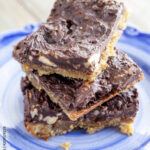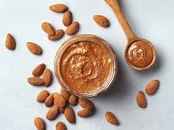Almond Delicious Recipes
Almond Delicious Recipes, Almond recipes, almond dishes, almond cooking, almond desserts, almond snacks, healthy almond recipes, easy almond recipes
Introduction
Almond delicious recipes in 2024 are about the versatile nuts that have graced our tables for centuries and are packed with nutrients and a delightful nutty flavor that elevates any dish. From savory starters to delectable desserts, almonds add a touch of sophistication and irresistible crunch to a myriad of culinary creations.


As you embark on an almond-delicious recipe culinary journey, let almonds be your guide, transforming your kitchen into a symphony of flavors and textures. Explore the endless possibilities that almonds offer, and discover the joy of creating delicious and nutritious meals that will leave your taste buds wanting more.
1 . How can Almonds be Incorporated into Your Diet for Healthy Snacking?
Incorporating almonds into your diet for healthy snacking is a great way to boost your nutrients and enjoy a satisfying crunch. Here are some simple and delicious ways to incorporate almonds into your daily routine:
- Snack on raw almonds: Enjoy a handful of raw almonds as a quick and easy snack. They are packed with protein, healthy fats, fiber, and vitamin E, making them an excellent choice for keeping you feeling full and energized.

Nutritional Powerhouse: Almonds’ - Add almonds to trail mix: Create your trail mix by combining almonds with other nuts, seeds, and dried fruits. This provides a variety of flavors, textures, and nutrients.
- Sprinkle almonds onto yogurt or oatmeal: Add a sprinkle of chopped almonds to your yogurt or oatmeal for a crunchy and protein-rich topping.

- Blend almonds into smoothies: Blend almonds into your smoothies for a creamy and nutrient-dense boost. They add a nutty flavor and a boost of protein and healthy fats.
- Make almond butter: Make your almond butter by blending almonds in a food processor until smooth. This is a versatile and nutritious spread that can be used on toast, crackers, or fruit.
- Use almond milk as a dairy-free alternative: Substitute almond milk for dairy milk in your cereal, coffee, or smoothies. It provides a creamy texture and a nutty flavor.
- Incorporate almonds into baking: Add chopped almonds to cookies, muffins, or granola bars for a crunchy and flavorful addition.

- Use almond flour in baking: Replace wheat flour with almond flour in baking recipes for a gluten-free and low-carb option. Almond flour is also a good source of protein and healthy fats.
- Make almond butter cups: Fill miniature muffin tins with melted chocolate and top with a few chopped almonds. Freeze until set for a delicious and nutritious treat.
- Add almonds to salads: Sprinkle chopped almonds onto salads for a crunchy and protein-rich topping.
Benefits of Using Almond Flour in Baking: Almond flour is a nutritious and versatile alternative to traditional wheat flour, offering a range of benefits for baking and overall health. Here are some of the key advantages of using almond flour in your culinary creations:
- Gluten-Free and Low-Carb: Almond flour is naturally gluten-free, making it an excellent choice for individuals with celiac disease or gluten intolerance. It also contains significantly fewer carbohydrates than wheat flour, making it a suitable option for those following low-carb or ketogenic diets.
- Rich in Protein and Healthy Fats: Almond flour is a good source of protein, providing about 3 grams per ounce. It also contains healthy fats, including monounsaturated and polyunsaturated fats, which can help promote heart health and reduce the risk of chronic diseases.
- High in Fiber: Almond flour is a high-fiber food, offering about 3 grams of fiber per ounce. Fiber can help regulate digestion, promote satiety, and contribute to a healthy gut microbiome.
- Low Glycemic Index (GI): Almond flour has a low glycemic index (GI), meaning it releases sugar into the bloodstream slowly. This can help prevent blood sugar spikes and is beneficial for individuals with diabetes or those who want to manage their blood sugar levels.
- Nutty Flavor and Texture: Almond flour imparts a subtle nutty flavor and a moist, crumbly texture to baked goods. This can enhance the flavour and texture of various baked items, from cookies and muffins to cakes and pieces of bread.
- Versatile in Baking: Almond flour can be used in a variety of baking recipes, including cookies, muffins, cakes, bread, and even some savory dishes. It can often be substituted for wheat flour in a 1:1 ratio.
Overall, almond flour offers a nutritious and versatile alternative to traditional wheat flour, providing a range of health benefits and culinary advantages. Whether you’re looking for gluten-free, low-carb, or protein-rich options, almond flour is an excellent choice for enhancing your baking creations and promoting overall well-being.
Make Your Almond Butter at Home
Ingredients:

- 2 cups raw almonds (optional: Blanched almonds)
- 1/4 teaspoon salt (optional)
- 1/4 teaspoon ground cinnamon (optional)
- 1/2 teaspoon vanilla extract (optional)
- 2 tablespoons maple syrup or honey (optional)
Instructions:
- Preheat the oven: Preheat your oven to 350 degrees F (175 degrees C).
- Toast the almonds: Spread the almonds evenly in a single layer on a baking sheet. Roast for 10-12 minutes, stirring once or twice, until the almonds are lightly toasted and fragrant. Let cool slightly.
- Process the almonds: Transfer the toasted almonds to a food processor or high-powered blender. Blend until smooth and creamy, scraping down the sides as needed. It may take several minutes depending on the power of your blender or food processor.
- Add flavorings and adjust consistency (optional): If desired, add salt, cinnamon, vanilla extract, and maple syrup or honey to the blended almonds. Continue blending until the desired consistency is achieved. If your almond butter is too thick, add a small amount of oil, such as almond oil or avocado oil, to thin it out. If it’s too runny, add a bit more almond flour to thicken it up.
- Store the almond butter: Transfer the freshly made almond butter to an airtight container, such as a mason jar or a plastic container with a tight-fitting lid. Store in the refrigerator for up to 2 months.
Tips:
- For a smoother and creamier almond butter, use blanched almonds. Blanched almonds have had their skins removed, which can make the almond butter less gritty.
- If you don’t have a food processor or high-powered blender, you can use a regular blender. However, it may take longer to achieve a smooth consistency.
- Experiment with different flavorings to create your own unique almond butter variations.
Enjoy your delicious homemade almond butter!
Creative Ways to Use Almond Butter
Almond butter is a versatile and delicious nut butter that can be used in a variety of ways beyond just spreading it on bread or toast. Here are some creative ways to use almond butter to enhance your meals and snacks:
- Make almond butter sauces: Whip up a creamy and flavorful almond butter sauce to drizzle over vegetables, rice, or noodles. Simply combine almond butter with soy sauce, honey, and a touch of lime juice for a quick and easy Asian-inspired sauce.
- Create almond butter dips: Prepare a healthy and satisfying almond butter dip for fruits, crackers, or pretzels. Blend almond butter with yogurt, honey, and a pinch of cinnamon for a sweet and tangy dip.
- Craft almond butter energy balls: Roll up nutritious and energizing almond butter balls for a portable snack or post-workout treat. Combine almond butter with oats, honey, and dried fruits, then shape them into bite-sized balls.
- Bake almond butter treats: Incorporate almond butter into your baking adventures by adding it to cookies, muffins, or granola bars. The nutty flavor and moist texture complement various sweet creations.
- Add almond butter to smoothies: Blend almond butter into your smoothies for a protein-rich and creamy boost. It adds a nutty flavor and enhances the nutritional profile of your smoothie.
- Use almond butter as a marinade: Marinate chicken, tofu, or tempeh in a flavorful almond butter-based marinade for a tender and flavorful dish. Mix almond butter with soy sauce, ginger, and garlic for an Asian-inspired marinade.
- Dress salads with almond butter: Create a unique and flavorful salad dressing by blending almond butter with lemon juice, maple syrup, and Dijon mustard. Toss it over your favorite salad greens for a nutty and tangy dressing.
- Make almond butter frosting: Swap traditional frosting for a healthier and more flavorful almond butter frosting. Combine almond butter with powdered sugar, cocoa powder, and vanilla extract for a decadent and guilt-free frosting.
- Add almond butter to stir-fries: Stir almond butter into stir-fries for a nutty and protein-rich addition. It can thicken the sauce and add a unique flavour profile to your stir-fried dishes.
- Use almond butter as a binder: Replace eggs with almond butter in some recipes to create eggless and vegan options. Almond butter can act as a binder in cookies, muffins, and other baked goods.
If you enjoyed this article, please like and share it with your friends, and don’t forget to subscribe for more great content!
Almonds Joy 2024:The Comprehensive Guide to Almonds’ Health Benefits



